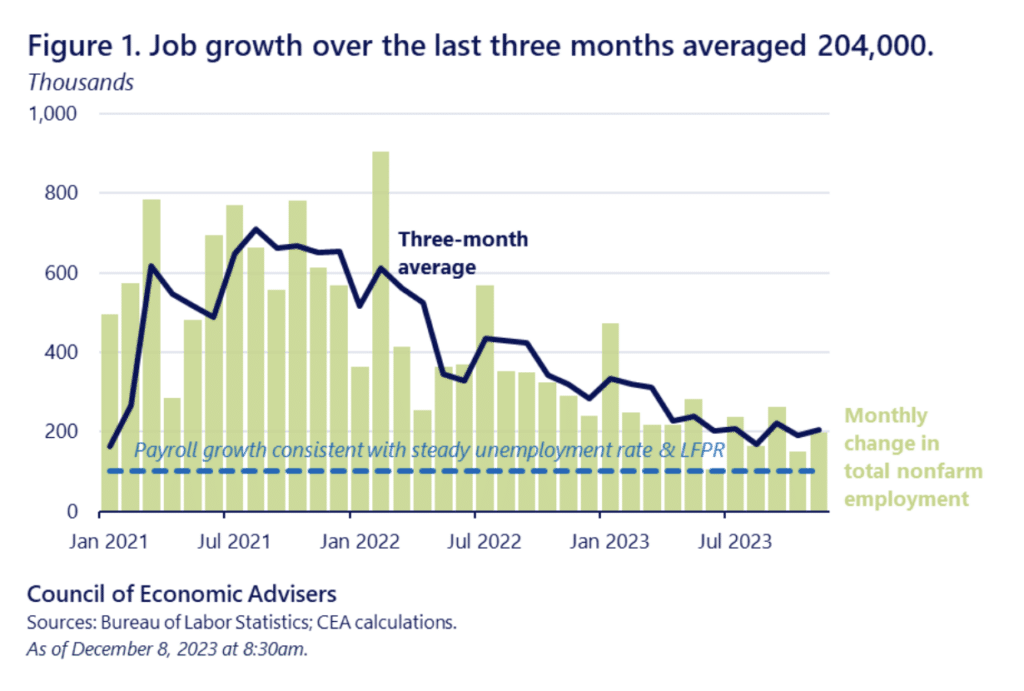The US Employment Report and Why it Matters
When looking at financial markets, few indicators carry the weight and influence of the US Employment Report. Released monthly by the Bureau of Labor Statistics, this comprehensive report provides a snapshot of the nation’s employment landscape, offering crucial insights into the health and direction of the economy.
Why It Matters:
Economic Pulse: The employment report serves as a powerful pulse check on the overall economic health. The number of new jobs added or lost directly correlates with economic expansion or contraction, providing a real-time gauge of the nation’s prosperity.
Consumer Confidence: Employment levels have a direct impact on consumer sentiment. A robust job market often translates to increased consumer spending, a driving force behind economic growth. Conversely, rising unemployment can lead to cautious spending and economic slowdown.
Inflation Indicators: The Federal Reserve closely monitors employment data to assess inflationary pressures. A tight job market, with low unemployment rates, can trigger wage increases, potentially fueling inflation. The report helps policymakers make informed decisions on interest rates and monetary policy.
Market Reactions: Financial markets, ever-sensitive to economic indicators, react promptly to the employment report. A positive report, indicating strong job creation, can boost investor confidence and drive market rallies. Conversely, disappointing figures may lead to market corrections and increased volatility.
Key Components:
Non-Farm Payrolls: The total number of paid workers, excluding farm employees, government employees, and non-profit organisation employees. It is a critical indicator of the economy’s job-creating prowess.
Unemployment Rate: The percentage of the total labour force that is unemployed but actively seeking employment. A lower unemployment rate signifies a healthier job market.
Average Hourly Earnings: Reflects the average earnings of private-sector workers and is a key measure of wage growth. Rising wages can impact inflation and consumer spending patterns.
Market Anticipation: Financial markets brace themselves in the days leading up to the employment report release. Analysts, traders, and policymakers scrutinise the data for cues on potential interest rate changes, market sentiment, and broader economic trends.
Expectations for Decembers US Employment Report
As we await the December jobs report, expectations hover around a forecasted net gain of 160,000 jobs, a slight decline from November’s 199,000 figure influenced by specific circumstances. Economists anticipate a modest uptick in the jobless rate, potentially moving from 3.7% to 3.8%.

A net job gain in December would mark the 36th consecutive month of labour market expansion, showcasing resilience and securing its place as the fifth-highest period on record. Beyond mere statistics, the employment report plays a pivotal role in assessing the economic landscape, especially in dispelling or confirming concerns about a potential recession.
Looking ahead to 2024, projections hint at a gradual softening of the labour market. This aligns with the Federal Reserve’s pursuit of a soft landing, strategically curbing inflation without spiking unemployment. The anticipated softer labour market sets the stage for potential rate cuts, providing the central bank with manoeuvrability after facing 11 rate hikes over the past two years.
ADP Employment Data Beat Expectations
Yesterday’s release of December’s ADP employment report surpassed expectations, revealing a significant uptick in US employment. Initial projections suggested a modest increase of 115k jobs, following a 103k rise in November. However, the actual data pleasantly surprised with a robust surge of 164k jobs.
The majority of this employment surge originated from the services sector, contributing a substantial 155k jobs, while goods-producing jobs saw a more modest addition of 9k. A slight revision in the November figures adjusted the initial 103k uptick to 101k. Despite these adjustments, the market response remained relatively subdued, suggesting today’s US Employment report is being looked at as more significant.